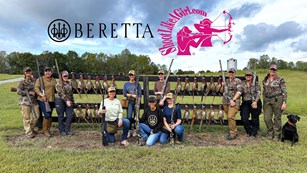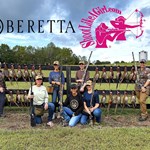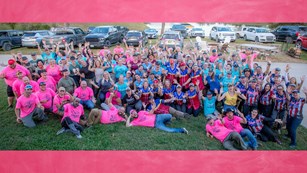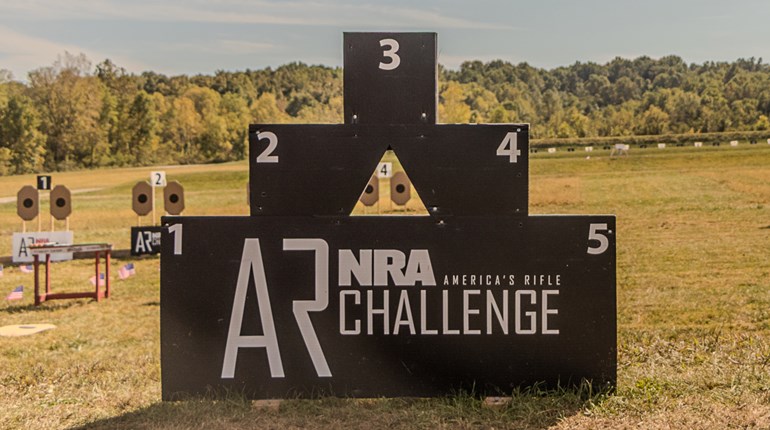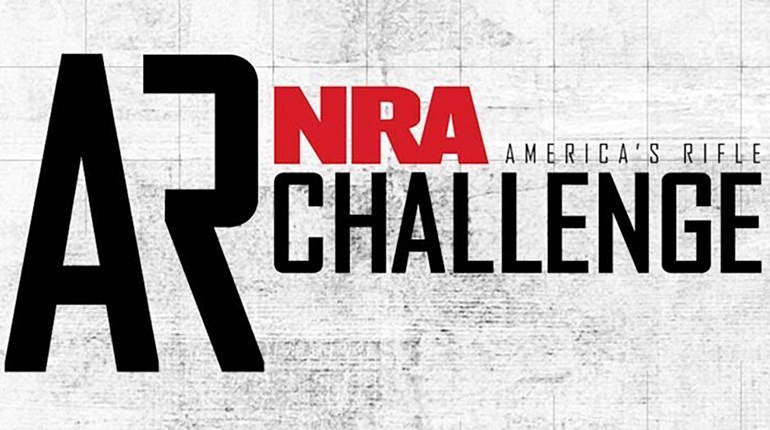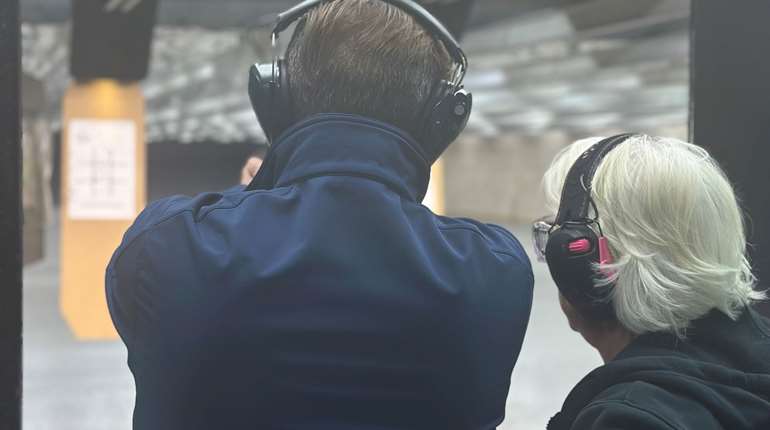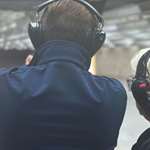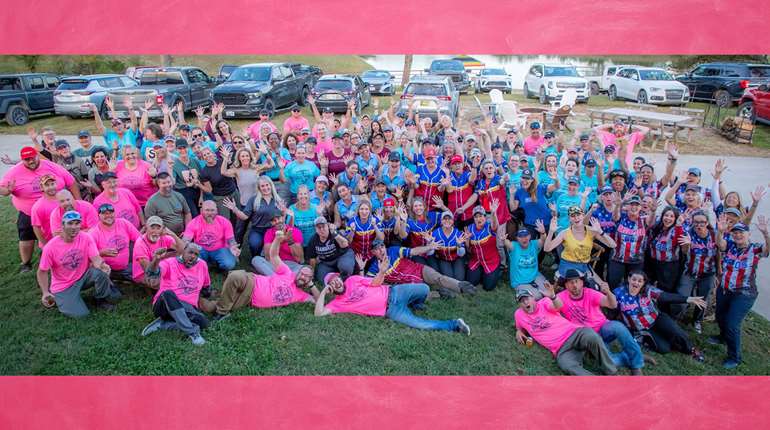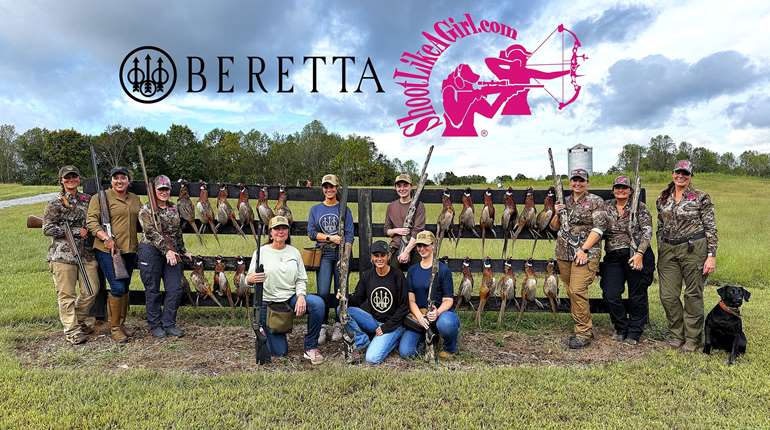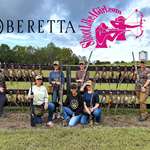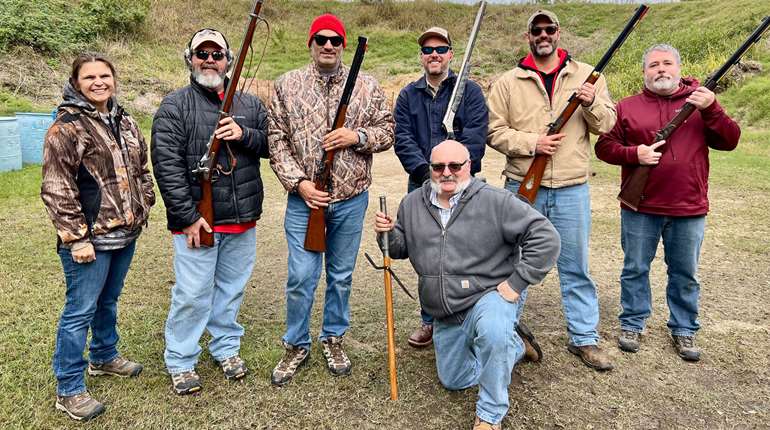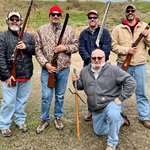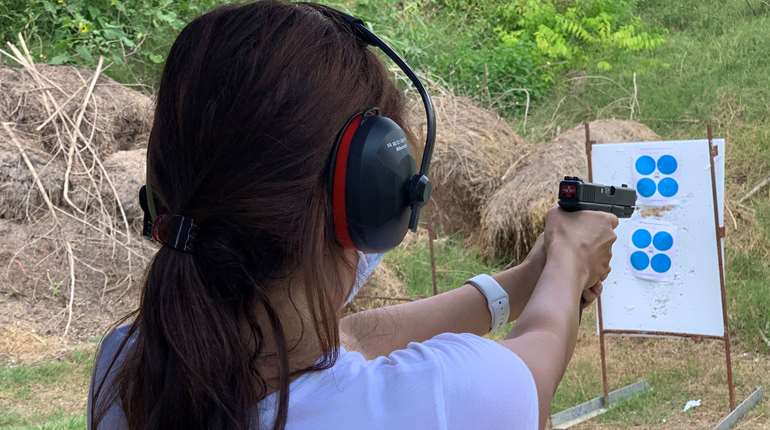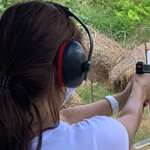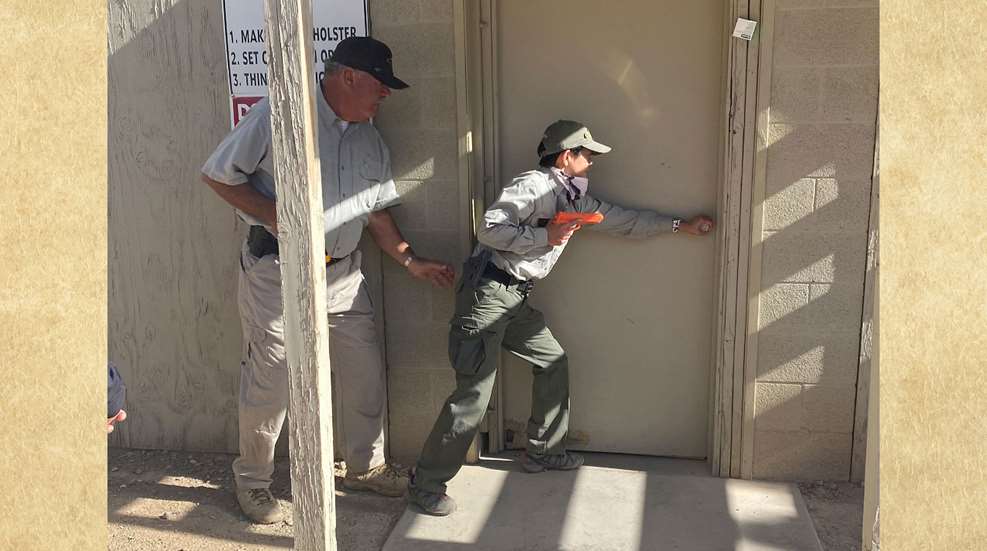
If our failures and embarrassing moments are our biggest learning experiences, boy, did I learn a lot during a shoot-house exercise at Gunsite Academy.
It was my first time ever doing force-on-force, where the students and the mock “bad guys” are decked out in protective gear and armed with functional guns that fire Simunition rounds. An instructor set up the scene inside the shoot house: I was home alone one evening, watching TV in the back room of the house. There was a modern sporting rifle (MSR) in the closet and a phone on the coffee table in front of me. I was nervous, having never done force-on-force before and knowing that something was about to happen, but not knowing what.
I could hear an “intruder” kicking in the front door of the house, several rooms away. With my heart in my throat, I grabbed the phone and ran to the closet, where I hid, silent, panicked, clearly not thinking straight, with the gun pointed in the air and my finger out of the trigger guard. When a teenager poked his head into the closet, I panicked and frantically snatched the trigger, firing a shot in the air a few feet from his head. The observing instructor called an end to the exercise.
It was one of the most humbling moments of my life. Even though I knew none of it was real, I was absolutely scared to death. I train regularly. This was my fifth or sixth Gunsite course over several years. I’m very comfortable with an MSR and have written about, read about, trained for and discussed self-defense at length for a long time. I thought I was ready, but when things got heated, much of my training flew out of my head and I made several downright dumb moves in the midst of an adrenaline dump.
I learned a few important lessons that day, but the one that stands out the most is that you truly never know how you’re going to react in a defensive situation until you’re actually there. The effects of adrenaline on your system can include tunnel vision, hyper focus, loss of fine motor skills—and of course, the ability to think clearly, at least in my case. Imagine suffering all these effects for the first time when your life is on the line! For this reason, I strongly recommend that you do everything you can to train under stress in an attempt to simulate at least some of that adrenaline rush. There are a few ways you can do this.

Simulation Training
The most effective is simulation training, like what I did at Gunsite. If your time and your budget allow, find a school that offers indoor shoot houses, outdoor simulators and even force-on-force training when you’re ready for it. This is about as close to a true defensive encounter as you’ll be able to get in a safe environment, and you might be shocked by how much you’ll learn about self-defense and about your own psyche. You might have to take several classes before the school deems you ready for force-on-force, but that’s OK. You might even start by walking through scenarios with plastic “blue guns” just to work through some of the mental aspects of self-defense, and this can be very helpful—and surprisingly stressful, even with no firearm involved.

Registered Competition
Training like that doesn’t always come cheap, though, and if it’s not in the cards for you right now, there are still things you can do to up the stress level of your shooting. You can experience some real pressure by taking part in some competitive shooting events, particularly those like Steel Challenge or 3-Gun, which are timed. The sound of the timer going off initiates a stress response (at least it does for me), and you’ll put pressure on yourself to go faster and faster. It obviously isn’t the same as the stress you’ll be under in a simulator, but it will start getting you accustomed to handling and shooting your firearm when your heart rate is elevated and your palms are getting sweaty.

Informal Competition
If organized competition isn’t your thing, you can do a less formal version at the range with a buddy—just make sure you’re following range rules and maybe let the range officer know what you’re up to if necessary. Dueling trees are great for this, as are steel poppers. What you need is some time element or an easy way to tell who beat who to the punch. The audible and visual impact of reactive targets make it more satisfying. It’s fun and mildly stress-inducing at the same time, and while it’s not nearly as intense as simulation training or even as pressure-packed as competition shooting, if you and your shooting buddy take it seriously enough that you’re genuinely trying your best to beat each other, you’ll find it raises your heart rate and ups the stress factor. (And it’s a lot cheaper.)
Self-Timed Drills
No shooting buddy with whomto compete? If you’re going it alone, you can still put a little extra pressure on yourself by adding a time element to anything you do—dry-firing, reloading, getting X number of shots on target in under X seconds, whatever. It won’t simulate a defensive encounter, but it’s certainly better than just plinking at your leisure with no parameters at all.
Whatever you do, put some thought and then some time and effort into pressure-testing your shooting. I’ve done force-on-force again after that first experience, and it went much more smoothly. Although I still made a few mistakes and learned some things, the important part is that the panic was gone—or at least reduced to a heart-pounding stress response rather than all-out brain shutdown. The more you do this kind of thing and put some pressure on yourself to perform under stress, the more clear-headed you’ll be in a true emergency.






